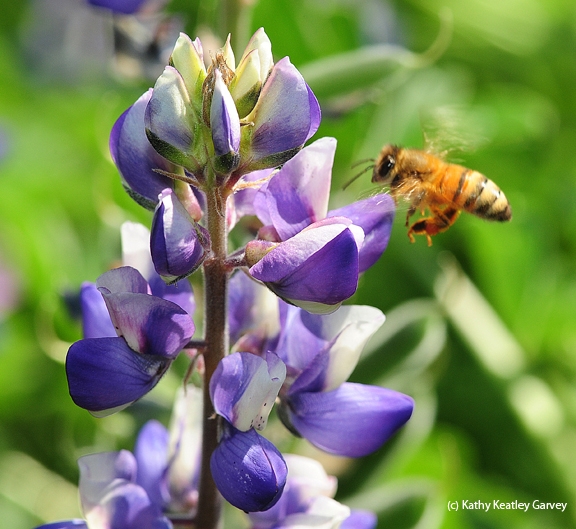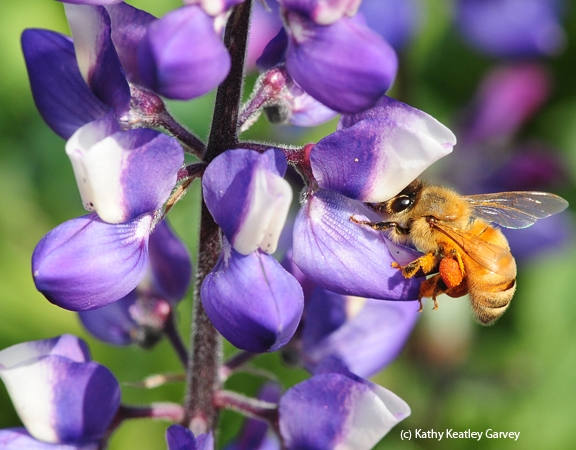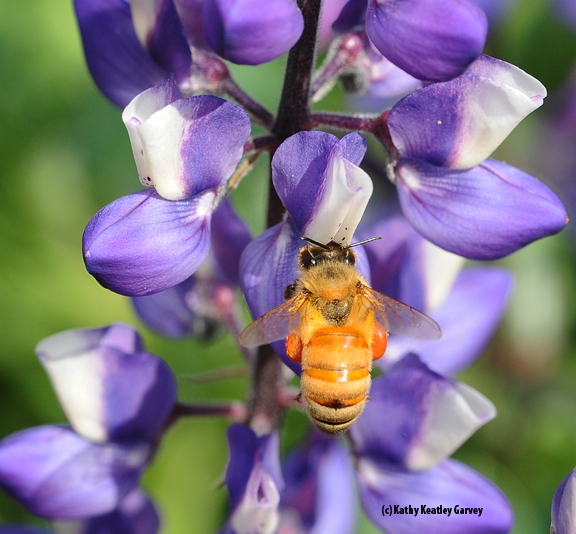It's a given: Honey bees love lupine.
We watched them buzzing around a flower patch of blue (lupine) and gold (California poppies) today along Hopkins Road, University of California, Davis, west of the central campus.
Those are Aggie colors: blue and gold. And those are Aggie bees, from the nearby Harry H. Laidlaw Jr. Honey Bee Research Facility, operated by the UC Davis Department of Entomology and Nematology, on Bee Biology Road.
Speaking of bees, the Bohart Museum of Entomology is hosting an open house, themed "Pollination Nation," from 1 to 4 p.m., Saturday, March 14 in Room 1124 of the Academic Surge Building, Crocker Lane.
“It will be about bees, bees, bees,” said Lynn Kimsey, director of the Bohart Museum and professor of entomology at UC Davis. The event is free and open to the public. Visitors can converse with bee specialists and view displays of bees from all over the world. Family activities are also planned.
Of the 20,000 bee species identified worldwide, some 4000 are found in the United States, and 1600 in California. The most recognizable, of course, is the honey bee, but it is not a native. European colonists brought it here (Jamestown colony) in 1622. The honey bee didn't arrive in California until 1853.
Bees play a profound role in shaping the world we live in, but many species remain strangers to us, according to native pollinator specialist and Bohart Museum associate Robbin Thorp, distinguished emeritus professor of entomology at UC Davis and a co-author of California Bees and Blooms: A Guide for Gardeners and Naturalists.
Copies of the California Bees and Blooms (Heyday Books) and Bumble Bees of North America: An Identification Guide (Princeton Press), also co-authored by Thorp, will be available in the gift shop.
“Nature has programmed bees to build nests and supply their young with nutritious pollen and nectar, and their unique methods for collecting these resources are fascinating to observe, the authors wrote. "Their lives are dictated by season, weather and access to preferred flower types and nesting habitat.”
Attached Images:


